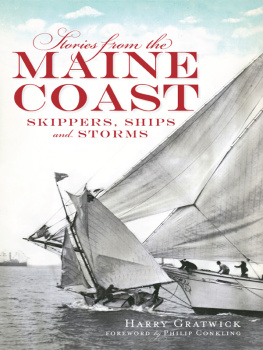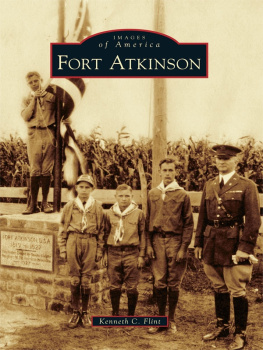
Published by The History Press
Charleston, SC 29403
www.historypress.net
Copyright 2013 by Harry Gratwick
All rights reserved
First published 2013
e-book edition 2013
Manufactured in the United States
ISBN 978.1.61423.901.7
Library of Congress CIP data applied for.
print edition ISBN 978.1.60949.536.7
Notice: The information in this book is true and complete to the best of our knowledge. It is offered without guarantee on the part of the author or The History Press. The author and The History Press disclaim all liability in connection with the use of this book.
All rights reserved. No part of this book may be reproduced or transmitted in any form whatsoever without prior written permission from the publisher except in the case of brief quotations embodied in critical articles and reviews.
Hang out our banners on the outward walls;
The cry is still, They come! Our castles strength
Will laugh a siege to scorn.
William Shakespeare, Macbeth, Act V, Scene 5
Contents
Foreword
Writing a history of the forts of Maine is a daunting undertaking because the state was defended from 1607 through the Cold War. Attempting to include all the defense sites in the state would be an intimidating job whose completion might require a lifetime of work.
Historian Harry Gratwick has taken a much more practical and appealing approach to this task by selecting five different categories of fort sites, which include twelve different fortifications. For each of these forts, he has focused on persons, past and present, connected with these locations.
Once Harry had decided on this pragmatic approach, his research on each fort was meticulous. He located hundreds of published works (books, pamphlets, articles and brochures), visited every site, interviewed scores of persons and found numerous illustrations.
Finally, Harry has taken the immense amount of material he gathered and organized it into interesting and entertaining segments in each of the five chapters. Every person with an interest in Maines history will find this imaginative work delightful to read and will come away with a plethora of fascinating insights into the history of this remarkable state.
Joel Eastman
Professor Emeritus of History
University of Southern Maine
Preface
For this book I have chosen to write about twelve of the several dozen forts that were built in Maine. Some that I have selected are largeothers are small. They range from early sixteenth-century forts to the Civil War forts that were built in the middle of the nineteenth century. Geographically, they represent a diverse collection of Maines forts. In the case of each, I have focused on the actions of a particular individual or individuals whose connections with that forts history make a particularly interesting story.
Acknowledgements
The forts discussed in this book presented several challenges. The first was to select a variety of forts that represented different periods in Maines history. The next challenge was to choose an interesting person, or persons, connected with each forts history to write about. The final challenge was to locate each fort and then to find a way to get there, which in some cases was not as easy as it sounds. I would like to thank the following people for helping me with these challenges:
Lee Theriault at Fort Kent; Ken and Patty Higgins, Steve Estes and Glenn Dochermann at Fort McClary; Jonathan Metcalf and Joanne Cameron at Fort Edgecombe; Kelsie Tardiff, Alison Carver and Neill De Paoli at Fort William Henry; Peggy McCrea and Jim Skoglund at Fort St. George; Paige Lilley and Jim Stone at Fort George; Leon Seymour and Dick Dyer at Fort Knox; Gary Morong, Brian Murray and Diane Longley at Fort Popham; Linda Novak and Judy Semple at Old Fort Western; and Joel Eastman, Karen and Harold Cushing and Ken Ford for the Portland Harbor forts (Preble, Scammel and Gorges).
In addition, I appreciate the assistance I received from Gillian Thompson, editor at the Working Waterfront; Brenda Steeves (ret.), archivist/special collections, the University of Maine, Orono; Tom Desjardins, historian at the Maine Bureau of Parks and Lands; and Valerie Morton and Linda Whittington at the Vinalhaven Public Library. Finally, I would like to thank my son, Philip, for his historical advice, and as always, I am grateful to my wife, Tita, for her love and support, as well as her editorial expertise.
CHAPTER 1
The Boundary Forts
THE COOK AT FORT MCCLARY
What was the vice president of the United States doing as a cook at Fort McClary in Kittery, Maine, during the summer of 1864? The short answer is that Hannibal Hamlins coast guard unit had been called for active duty, and as a member of Company A, he felt obliged to report.
Hamlin had enlisted as a private when the Civil War began. Although Company Commander Llewellyn J. Morse told him that he could have a purely honorary position, Hamlin insisted on active service: I am the Vice-President of the United States but I am also a private citizen, and as an enlisted member of your company, I am bound to do my duty. I aspire only to be a high private in the rear ranks, and keep step with the boys in blue.

Hannibal Hamlin was vice president of the United States when he served as the cook at Fort McClary in the summer of 1864. Courtesy of Library of Congress, Prints and Photographs Division.
A Breast Work of Six Guns Shall Be Erected
Kittery was the first town in Maine to be organized in 1647. In Maine Forts, Henry Dunnack writes, With the coming of the first settlers to the area in 1623, it is possible that individuals built simple breastworks and blockhouses, but the records, if there were any, have disappeared. By the late seventeenth century, Kittery had grown to the point where the towns leading citizen, William Pepperell, built a house for himself on Kittery Point. After he had completed his dwelling, Pepperell purchased an additional twelve acres, which Dunnack tells us was an ideal place for a fort.
In the early eighteenth century, an intense economic competition had arisen between Maine and New Hampshire, across the Piscataqua River. Customs officials from that colony ordered all ships coming into the harbor to pay a customs duty, which upset Pepperell and other Kittery merchants. Therefore, in 1690, they petitioned the Massachusetts General Assembly to build a fort and station a naval officer in the Port of Kittery.
Thus, Fort William was built in the early eighteenth century. It is not entirely clear whether the fort was named in honor of the elder William Pepperell or the co-ruler of England at the time, King William. Henry Dunnack adds that the purpose of the fortification was to protect merchants from unreasonable duties imposed by New Hampshire. The directive from the Province of Massachusetts further declared that six guns with shot and carriages be ordered to the town of Kittery upon their erecting a Breast Work and platform.
Robert Bradley, in the Forts of Maine 16071945, notes: What is interesting is that the fort was not built to protect the town from French or Indians, but rather from folks closer at hand. A naval officer was kept in the Port of Kittery to avoid the unreasonable duties exacted from the inhabitants of this province [Maine] passing in and out of the said river [Piscataqua].
The coming of the American Revolution caused considerable anxiety among the citizens of both Kittery and their neighbor across the river, Portsmouth, New Hampshire. British warships had begun to plunder towns on the Maine coast, and it was feared that the Kittery area would soon be next. Fort William was armed and garrisoned in preparation for an anticipated British attack.
Next page










